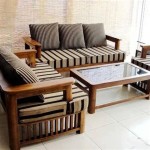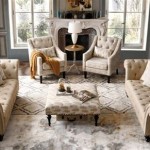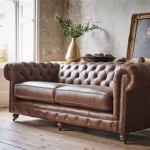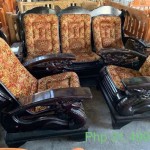Sectional Sofa Standard Size In Cm: A Comprehensive Guide
Sectional sofas, known for their versatility and ability to accommodate large groups, have become a staple in modern living spaces. Understanding the standard sizes of sectional sofas in centimeters is crucial for planning layouts, ensuring comfortable seating arrangements, and making informed purchasing decisions. The dimensions of a sectional sofa impact its suitability for a particular room size and configuration. This article delves into the typical dimensions of sectional sofas in centimeters, exploring the factors influencing these measurements and providing a detailed overview of common sectional configurations.
When considering a sectional sofa, it is essential to recognize that "standard size" is not a fixed value. Instead, it represents a range of common dimensions that vary depending on the configuration, the number of pieces, and the style of the sofa. Manufacturers often provide detailed specifications for each sectional sofa model, including the overall length, depth, height, and individual component dimensions. Utilizing these specifications is key to ensuring the sofa fits the intended space and meets the user's specific needs.
Several factors contribute to the variability in sectional sofa sizes. The number of seats directly influences the overall length of the sofa. A sectional with five seats will naturally be larger than one with three seats. The presence of features such as chaises, ottomans, or corner wedges also affects the overall dimensions. The design style, whether modern, traditional, or transitional, can influence the scale and proportions of the sofa. Finally, the individual manufacturer's design choices and construction methods contribute to the diversity of sectional sofa sizes available in the market.
Understanding Key Dimensions in Centimeters
To effectively evaluate sectional sofa sizes, it is important to familiarize oneself with the relevant dimensions and their significance. The overall length, representing the total width of the sofa from one end to the other, is a primary consideration when determining if the sofa will fit along a particular wall or within a designated area. The depth, measuring from the front of the sofa to the back, influences the seating comfort and the amount of floor space the sofa occupies. The height, measured from the floor to the top of the back cushions, affects the visual prominence of the sofa and its overall aesthetic appeal.
The seat height, measured from the floor to the top of the seat cushion, is a critical factor for comfort and ergonomics. A seat height that is too low or too high can lead to discomfort or difficulty getting in and out of the sofa. The seat depth, measured from the front of the seat cushion to the back cushion, determines the amount of legroom available and influences the overall seating posture. Arm height, measured from the floor to the top of the armrest, is important for arm support and affects the overall comfort of the seating experience.
In addition to these overall dimensions, the individual component dimensions are also important to consider. Each piece of a sectional sofa, such as a corner wedge, an armless chair, or a chaise lounge, will have its own length, depth, and height. Understanding these individual dimensions allows for customized configurations and ensures that the sofa can be arranged to fit the specific needs of the room.
For example, a standard armless chair section may have a width of 70 cm to 90 cm, a depth of 90 cm to 100 cm, and a height of 75 cm to 85 cm. A corner wedge section might have dimensions of 90 cm x 90 cm in length and depth, with a height consistent with the other sections. A chaise lounge section could range from 80 cm to 100 cm in width and 150 cm to 180 cm in depth, providing extended leg support. When planning a sectional configuration, it is necessary to sum the widths of the individual sections to determine the overall length of the sofa.
Common Sectional Sofa Configurations and Their Dimensions
Several common sectional sofa configurations exist, each with its own typical dimensions. The L-shaped sectional, one of the most popular configurations, typically consists of two or three sofa sections joined at a right angle. A common size for an L-shaped sectional might be 240 cm to 280 cm in length along one side and 180 cm to 220 cm in length along the other side. The depth is usually consistent throughout, ranging from 90 cm to 100 cm.
U-shaped sectionals offer even more seating capacity and are ideal for larger rooms. These sectionals typically consist of three or more sofa sections, forming a U-shape. A typical U-shaped sectional may have dimensions of 300 cm to 360 cm in length across the back and 240 cm to 300 cm in length along each of the sides. The depth remains consistent, typically between 90 cm and 100 cm.
Modular sectionals, which offer the greatest flexibility, consist of individual pieces that can be arranged in various configurations. The dimensions of modular sectionals vary widely depending on the number of pieces and the specific arrangement. A typical modular sectional might include armless chairs, corner wedges, ottomans, and chaise lounges, each with its own individual dimensions. The overall size of the modular sectional can be customized to fit the specific needs of the room and the user.
Sectionals with a chaise lounge offer a comfortable area for lounging and relaxation. The chaise lounge section typically extends from one end of the sofa, providing extended leg support. A common size for a sectional with a chaise lounge might be 220 cm to 260 cm in overall length, with the chaise lounge section extending approximately 150 cm to 180 cm in depth. The depth of the remaining sections would typically be between 90 cm and 100 cm.
Factors Influencing Sectional Sofa Size Selection
Selecting the appropriate size sectional sofa involves careful consideration of several factors. The size of the room is a primary consideration. It is essential to measure the room dimensions accurately and ensure that the sectional sofa will fit comfortably without overcrowding the space. Leaving adequate clearance around the sofa for traffic flow is important for maintaining a functional and aesthetically pleasing layout.
The intended use of the sofa also influences the size selection. If the sofa is primarily intended for seating a large group of people, a larger sectional with more seating capacity is desirable. If the sofa is primarily intended for lounging and relaxation, a smaller sectional with a chaise lounge or ottoman may be more appropriate. The number of occupants who will typically use the sofa also influences the size selection.
The style of the room and the overall aesthetic also play a role in selecting the appropriate size sectional sofa. A modern, minimalist room may benefit from a smaller, more streamlined sectional, while a more traditional or eclectic room may be able to accommodate a larger, more ornate sectional. The color and fabric of the sofa also influence its visual impact and should be considered in relation to the overall room décor.
The budget is also a factor to consider when selecting a sectional sofa. Larger sectionals with more seating capacity typically cost more than smaller sectionals. The quality of the materials and construction also influences the price. It is important to establish a budget and find a sectional sofa that meets the user's needs and preferences within that budget.
Measuring Sectional Sofa Dimensions Accurately
Accurate measurement is crucial for ensuring that the selected sectional sofa will fit the intended space. Use a measuring tape and record the dimensions in centimeters. It is recommended to measure the available space twice to ensure accuracy. Account for any architectural features, such as doorways, windows, or fireplaces, that may affect the placement of the sofa.
When measuring sectional sofa dimensions, refer to the manufacturer's specifications, which typically provide detailed measurements for each section of the sofa. Pay attention to the overall length, depth, height, seat height, seat depth, and arm height. Confirm that the dimensions specified by the manufacturer are consistent with the user's measurements of the available space.
Consider using painter's tape to mark out the intended footprint of the sectional sofa on the floor. This allows for visualizing the size and configuration of the sofa in the room and helps to identify any potential issues with space constraints or traffic flow. It also helps to ensure that the sofa will not obstruct any doorways or windows.
When measuring, account for any potential obstructions, such as baseboards, radiators, or electrical outlets. These obstructions can affect the placement of the sofa and should be factored into the overall measurement. If necessary, consider adjusting the placement of electrical outlets or relocating radiators to accommodate the sofa.
By carefully considering these factors and taking accurate measurements, the user can make an informed decision about the appropriate size sectional sofa for their space, ensuring a comfortable and aesthetically pleasing seating arrangement.

Sectional Sofa Dimensions Sizes Guide

L Shape Sofa Dimensions How To Ensure It Fits Your Room

L Shape Sofa Dimensions How To Ensure It Fits Your Room

Serena Top Grain Full Leather 2 Piece Left Bumper Chaise Sectional Sofa In Cognac

Coventry 131w Sectional Couch With Double Chaise Lounge Bush Home

Walters Sofa Design Ideas

Sofa Dimensions A Comprehensive Guide To Diffe Couch Sizes

Stockton 99w L Shaped Sectional Couch Bush Home

Valencia Elodie Leather Sectional 3 Seater With Chaise Recliner

S1035 2pc L Shape Sectional Leather Sofa Set With 2 Side Low Tables Stendmar








